Toys
Miniature Grand Prix
This is what we did before video games.
Posted By: Paul - Mon May 02, 2016 -
Comments (3)
Category: Games, Toys, 1960s, Cars
Action Man
For what started as a GI Joe ripoff, this toy seems to have evolved its own complex mythology. Not sure about propriety of "Bulletman," since that was and is a DC Comics character.
Full story here.
Posted By: Paul - Tue Feb 16, 2016 -
Comments (5)
Category: Toys, 1960s, Europe
Newest Must Have Trend
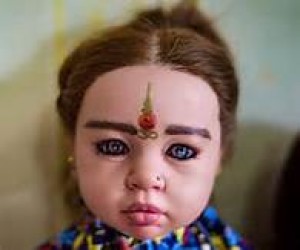
These creepy so called "God dolls" are a new popular trend coming out of Thailand. Not all of them have the disturbing third eye markings but all are supposed to be inhabited by a child's spirit. They are purported to bring good luck when loved and cared for. Because, yeah, that's where I hope kids spirits go, into a creepy doll to bring good luck to some yuppie jerk.
Posted By: Alex - Fri Jan 29, 2016 -
Comments (5)
Category: Gods, Toys, Myths and Fairytales
Little Brother
In 1967, Creative Playthings began selling the French-made "Little Brother" doll in America. It was an anatomically correct baby boy doll designed to encourage "acceptance of body differences."However, some American mothers regarded the thing as an abomination and protested to have it removed from the market. Said one protester, "We believe children should not relate sex organs with play. We think this is carrying 'educational' playthings too far."
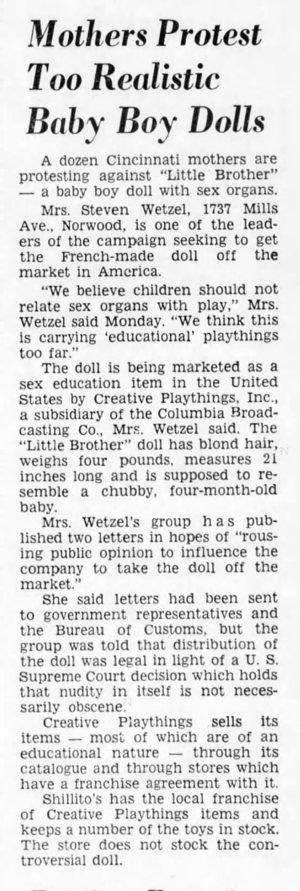
Cincinnati Enquirer - Nov 7, 1967


Frank Caplan, founder of Creative Playthings, with "Little Brother"
Newsweek - May 29, 1967
Posted By: Alex - Tue Jan 19, 2016 -
Comments (6)
Category: Toys, 1960s
Atom Bomb Toys
Italian toy maker Brumm normally makes miniature models of fancy sports cars (Ferraris, Alfa Romeos, etc.). But in 2006, the company decided to release models of the "Fat Man" and "Little Boy" atomic bombs dropped on Hiroshima and Nagasaki. They sold, at the time, for around $10 — but now go for around $36, if you can find any in stock.When the company debuted them at the International Toy Fair in Nuremberg, the bomb models generated a lot of controversy. The media described them as "Atomic bombs for the children's bedroom," and critics said they were in poor taste.
The company defended itself, insisting that its intent was to "provide a small historical contribution so as not to forget what generated the worst catastrophe of the twentieth century” and that the bomb models were actually a protest "against the insanity of nuclear war."
Of course, these weren't the first atomic-weapon toys ever produced. See this earlier post: Make nuclear war in your own home.


Posted By: Alex - Wed Dec 09, 2015 -
Comments (6)
Category: Toys, Atomic Power and Other Nuclear Matters, Weapons
“Life-sized” Alien Facehugger & Egg
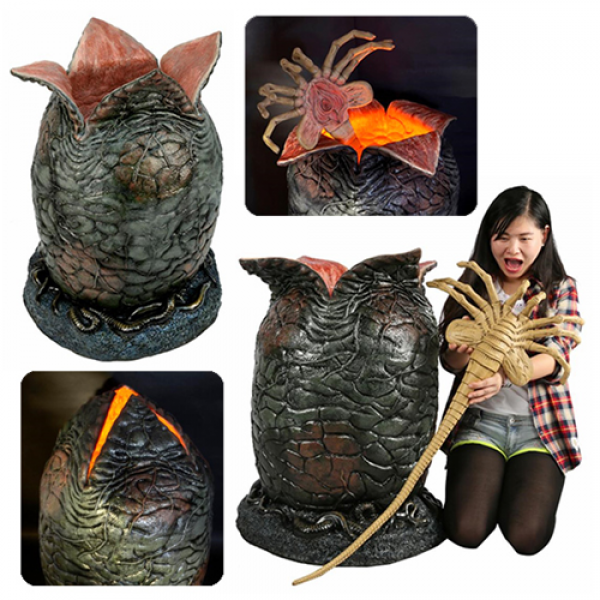
Too bad this won't be available until April 2016. Imagine the screams of terror, as depicted, when your lucky first-grader opens this under the Xmas tree.
Posted By: Paul - Fri Nov 20, 2015 -
Comments (5)
Category: Aliens, Death, Toys, Children, Eggs
Dying Pigs
In the first decade of the 20th century, "dying pigs" were the must-have toy that every kid wanted. They were rubber balloons shaped like pigs. You inflated them and then, as they deflated, they made a sound like the squeal of a dying pig.


The Brooklyn Daily Eagle - Sep 17, 1905
Posted By: Alex - Mon Nov 09, 2015 -
Comments (2)
Category: Toys, 1900s
The Z-Man, or Brain, Toy

What was so distinctive about this toy? Early pre-silicon programability.
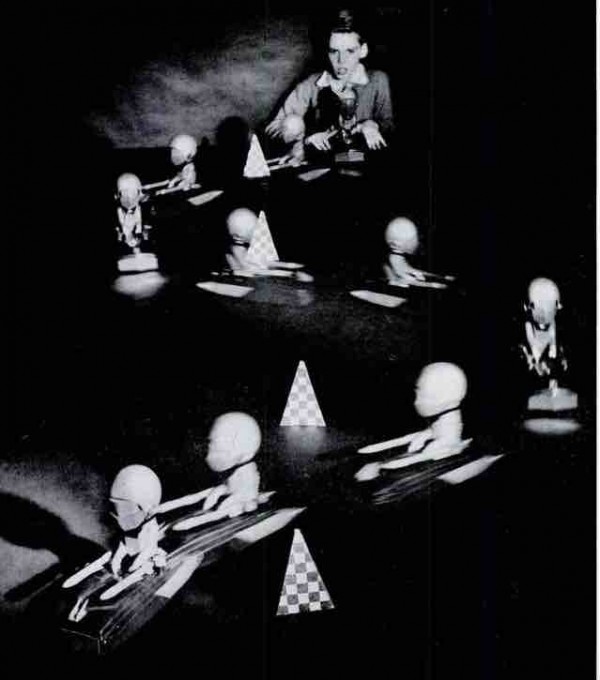
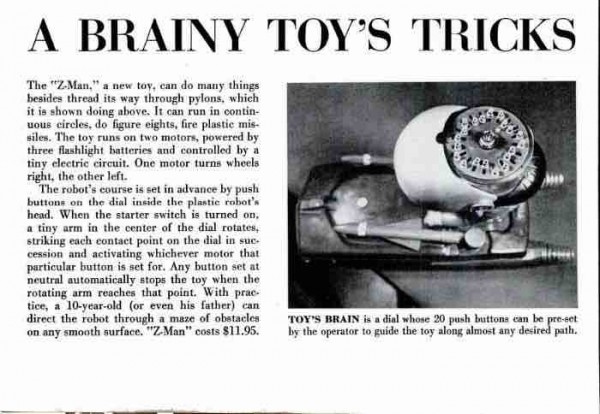
Original article here.
Even more pix and info at this blog.
Posted By: Paul - Wed Nov 04, 2015 -
Comments (4)
Category: Toys, AI, Robots and Other Automatons, Computers, 1950s
The Strange Change Machine
You know, why isn't "mad scientist" an encouraged career path for kids anymore, like it was in the 1960s? I think the foreclosure of this option says a lot about our joyless and grim culture.
Posted By: Paul - Mon Nov 02, 2015 -
Comments (3)
Category: Mad Scientists, Evil Geniuses, Insane Villains, Toys, 1960s
Civil War Nurse Barbie
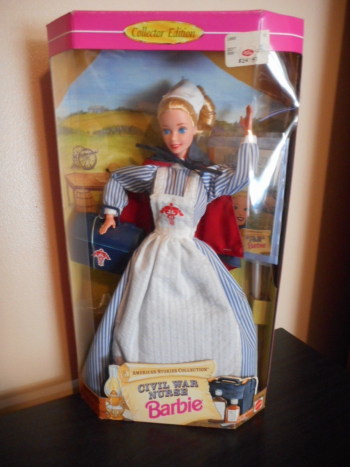
First of all, there's actually such a thing as a Civil War Nurse Barbie. (But no Civil War Soldier Ken, featuring horrific battle injuries).
Second, it's been pointed out in a number of places (such as here and here) that the doll is historically inaccurate. So it teaches kids bad history.
Dorothea Dix, Superintendent of Female nurses, famously set strict guidelines for all Union nurses: "They were required to be between 35-50 years old and plain-looking. [No attractive young nurses!] They were to dress in black or brown dresses and were not allowed to wear jewelry of any kind."
This is what an actual Civil War nurses' uniform looked like, complete with bloodstains:
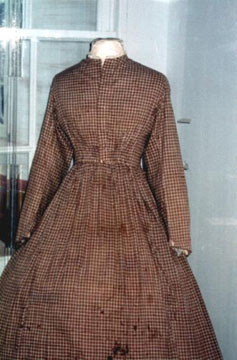
Unlike the Union, the Confederates didn't have a nurses organization that defined what nurses should wear. But Confederate nurses tended to dress in simple, plain dresses, because that was practical.
Posted By: Alex - Fri Oct 30, 2015 -
Comments (12)
Category: Toys, War, Nineteenth Century

| Who We Are |
|---|
| Alex Boese Alex is the creator and curator of the Museum of Hoaxes. He's also the author of various weird, non-fiction, science-themed books such as Elephants on Acid and Psychedelic Apes. Paul Di Filippo Paul has been paid to put weird ideas into fictional form for over thirty years, in his career as a noted science fiction writer. He has recently begun blogging on many curious topics with three fellow writers at The Inferior 4+1. Contact Us |




